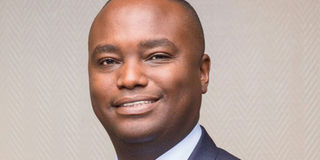Pick up in economy shores up Stanbic performance

Mr Patrick Mwehire, Stanbic Chief Executive Officer
The pickup in economic activities, which necessitated increased demand for loans across most economic sectors coupled with low prime lending rate shored up Stanbic Bank’s performance, posting Shs215b in profits, reflecting a growth of 7 per cent for the year ended 2018.
Stanbic, Uganda’s largest bank by asset, posted a Shs15b rise in profitability for the year ended December 2018 compared to Shs200b in 2017.
In the 2017/18 financial year the economy grew by 5.8 per cent and is projected to grow by 6.3 per cent in the 2018/19 financial year.
This will result into increased economic activities and is expected to drive up loan applications.
Presenting the bank’s results in Kampala, Mr Patrick Mwehire, the Stanbic chief executive officer, said the recovery in GDP in the period spurred the credit sector into double-digit growth thus helping to push up profitability.
Beyond this, he said, Stanbic drove on efficiency, cost control and credit risk to grow its revenues.
“Growth in customer deposits led to a strong market share of approximately 20 per cent,” he said, adding: “Stanbic customer deposits maintained strong growth of 8 per cent, which translated into Shs3.9 trillion from Shs3.6 trillion in 2017.”
Mr Mwehire, also said a reduction in the Central Bank’s prime lending rate helped commercial banks to lower lending rates to an average of 19.9 per cent.
The Bank of Uganda has maintained a low Central Bank Rate (CBR) – oscillating between 9 per and 10 per cent in the period.
The drop in the lending rates, Mr Mwehire said, supported credit growth as asset quality improved, while the drop in inflation boosted consumer demand and revival of the manufacturing sector.
However, Mwehire conceded that the first half of 2018 presented some challenges due to low economic activity and low aggregate demand.
Mr Sam Mwogeza, the Stanbic chief finance officer, said during the year there was improvement across all key financial metrics with aggregate demand picking up in the second quarter of 2018.


